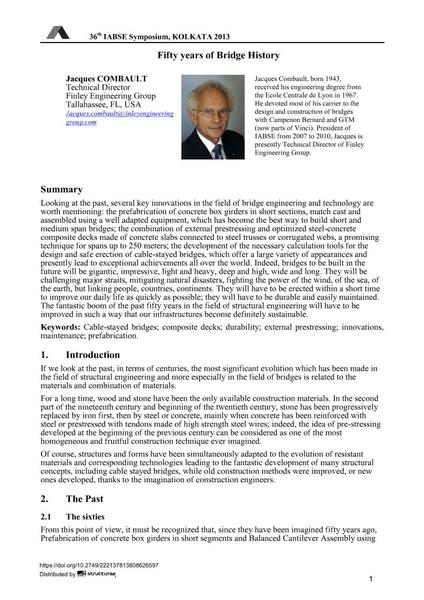|
Abstrakt:
|
Looking at the past, several key innovations in the field of bridge engineering and technology are worth mentioning: the prefabrication of concrete box girders in short sections, match cast and assembled using a well adapted equipment, which has become the best way to build short and medium span bridges; the combination of external prestressing and optimized steel-concrete composite decks made of concrete slabs connected to steel trusses or corrugated webs, a promising technique for spans up to 250 meters; the development of the necessary calculation tools for the design and safe erection of cable-stayed bridges, which offer a large variety of appearances and presently lead to exceptional achievements all over the world. Indeed, bridges to be built in the future will be gigantic, impressive, light and heavy, deep and high, wide and long. They will be challenging major straits, mitigating natural disasters, fighting the power of the wind, of the sea, of the earth, but linking people, countries, continents. They will have to be erected within a short time to improve our daily life as quickly as possible; they will have to be durable and easily maintained. The fantastic boom of the past fifty years in the field of structural engineering will have to be improved in such a way that our infrastructures become definitely sustainable.
|

